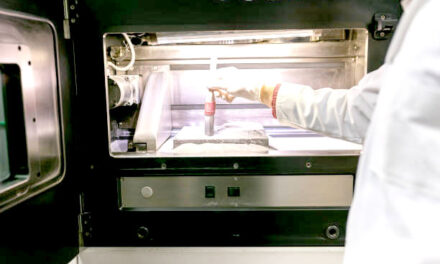Antonious Colts made his first trip to the old house he’d read about on the Internet as part of an ongoing search for himself.
Ernest Crowder came from St. Louis to see it, despite spending the last three weeks in bed with back pain.
Crowder felt he had to walk the grounds, looking at last at the pile of rocks where his ancestors were buried, and imagining their undocumented lives.
Robert Lindsey, who grew up driving past the plantation, had long felt its pull, as well as its pain.
They and many others took part in the reunion of the Coats and Thornton families in Etowah County this weekend. The event happens every two years in this community of about 1,500 people along the banks of the Coosa River.
But this time was different.
The families are descended from the enslaved people who built the two-story plantation house that shares their family names, sitting alongside the Appalachian Highway, within sight of row upon row of cotton.
On Sunday, they were invited inside and to wander the grounds of the white columned, antebellum mansion that dominates the landscape.
Those who came blinking in the 95-degree weather wiped the sweat off their brows, and for a brief moment, felt as though the accumulating years stood still.
For many, it was their first time entering the halls, walking through the rooms, and relaxing on the porches of the house that their forebears built and tended for almost 20 years as human property.
This trip inside, though, came at the invitation of the house’s owner, a white woman descended from a family that has owned the house, at one time or another, for 150 years.
More than 70 people made the trip through the house.
Men and women in their Sunday best carried children glued to their video screens, seemingly unaware of a connection. An 82-year-old man jaunted up to the second floor, despite his creaking knees, and congratulated himself on making it down the steep steps.
“I can’t help but think about what it was like back then,” said Jalyn Marbury, 19, of Gadsden, as she stood in the receiving room just off the front porch.
Amid the antique furniture and family photographs, a shadow from distant generations burst briefly and vividly into view for her.
“What they had to go through. It makes me want to know more where I came from,” she said. “It makes me feel closer to my family.”
‘They didn’t want to go back’
The house sits just a half-mile from the Coosa River, north of Gadsden, near Turkey Town.
Gideon Edward Coats, whose name was spelled differently than the community, bought several hundred acres of land for $1.25 an acre from authorities of the U.S. government.
Coats came to the area from Kershaw County, S.C., drawn by the lure of cheap land seized from the Cherokee Indians.
He took a wife from the tribe, though the marriage did not last long, according to records. A year after he purchased the property, the Cherokee were rounded up in forts around the South and forcibly marched to Oklahoma in the migration remembered as the Trail of Tears.
Local histories say Gideon owned 5,000 acres and 150 slaves, but Jeff Sauls, a historian who has examined records for more than 10 years, said Coates probably owned less than 25 enslaved people whom he brought from South Carolina.
Their names survive in census records – George, Sharlett, Dock, Mack, Sarah and Amanda. After the Civil War, their children were listed on census records with the names of Confederate generals – Stonewall Jackson and General Forrest.
Coats had purchased a beautiful, bountiful land that provided an almost baronial way of life.
The river and neighboring swamps were havens for wild geese and ducks, and the woods teemed with rabbits, raccoons, foxes, opossums and squirrels. One owner recalled the annual visit of wild pigeons “in such force as to darken the sky,” a local historian recounted.
Fields were good for crops, and the dry, humid climate was perfect for cotton. But it was a hard life for those who never had a choice in living there.
Coats and the slaves – and some say a few Cherokees – set to work on building the house: a 14-room, two-story mansion built in the shape of a T, with porches facing out from both floors on either side along the back.
No nails were used. Instead, all boards were connected with wooden pegs. Originally, it had 14 rooms, all 20 feet square, with 12-foot-high ceilings and eight fireplaces.
Nearly two centuries later, the land around the house still grows cotton with blooms lining the highway in early fall.
Bishop Roy Coats remembers picking it as a five-year-old boy across the road from the house. Now 82, he recalled dragging a flour sack made to hold 100 pounds behind him in the year before he started school.
“There’s an art to picking cotton so you don’t tear up your hands,” he said. “A rhythm to it.”
He remembered an aunt who could pick 400 pounds in a day, and another relative who earned enough money picking to buy a car. Over the years, mechanical pickers removed the need for the human element.
“The people kept raising how much they’d pay for you to pick it, but once you got away from the field, you didn’t want to go back,” he said.
He served two tours in Vietnam, survived a head wound that left a scar across his scalp, and moved back to Coats Bend from San Diego after he left the military.
For him, the plantation house is a reminder of time, and endurance. No matter its origins, it has stood for more than 175 years.
To do that, it had to be made of strong material, he said – just like the people descended from those who once lived and worked there. Those who lived on the plantation, and those who followed in generations after, still preserved a sense of personal dignity, he said.
“If you strive to get above it, it’s a positive rather than a negative,” he said. “If the young people of today would pick up some from the society of yesterday, we’d have a better place to live.”
‘People are people everywhere’
Antonious “Tony” Colts, 48, is a Christian rapper who lives in Atlanta.
Earlier this year, prompted by nagging questions about his family, Colts took a DNA ancestry test and learned, among other things, that his biological father was a man he had never met, who lived in Chicago. He traveled to meet the man, and suddenly things about his own life began to clarify, he said.
His real father liked to draw cartoon characters, something Antonious had done since his childhood. Colts learned that his talent for creating music was another trait he shared with a man he had only just met.
The experience sent him on a journey to learn more about his family, and, in essence, more about himself.
Taking the results of the DNA test, he soon learned that he was the descendant of Dock Coats, who was born in 1865, the year the Civil War ended and legal emancipation finally came to Alabama’s enslaved population.
It was his grandmother, Jurline, who learned to spell her name as Colts, since that’s the way it sounded when she heard it spoken. Her new name has stuck to Antonious’ time.
Colts had never been to Coates Bend before this weekend. But he began researching the area and learned about the house. That’s when he contacted its present owner, Lee Posey, a white woman, who in turn told him about his distant relatives living in the same area. When he learned of their reunion, he knew he had to come.
He was hesitant at first to speak with Posey, he said.
“Being from Chicago, I hear her accent,” he said.
“I wondered what her response was going to be. Here I am, a descendant of slaves. She had open arms, and started telling me the history of the house, starting contacting family members, and they told me the history they had as well. That shook that whole stereotype.
“People are people everywhere,” Colts said.
He also made contact with Crowder, a man living in St. Louis, who was another Coats descendent.
Together, they learned about a murder case involving one of their Coats ancestors – a fatal shooting that happened in Coates Bend in 1910. One of the family “tanked up on whiskey,” according to one newspaper account, went to the home of another man and fired a bullet into his heart – “shot him down like a dog,” the story went.
The man fled to Arkansas. Crowder said that was probably one reason his family settled in the Midwest. The story of the crime also resonated with Tony.
“Before I converted (to Christianity), I was on the path,” he said, meaning crime. “All my siblings were calm. And I wondered, where does this aggression come from? Maybe it’s in my blood.
“As an individual, that helps me understand things I have to watch out for. If you have an understanding, that gives you a better chance of dealing with it.”
‘It’s sweet and sour’
Robert Lindsey lived in Coats Bend twice – growing up there, and then coming back to the area after his retirement from the Ford Motor Co. in Ohio. He now lives in Atlanta following an auto accident six years ago that killed his wife and left him severely injured.
The sight of that old white house has been a part of his life since the beginning. It is a reminder of his roots, as well as the shame of human bondage.
“That’s a plantation house,” he said. “It’s a slave plantation. It’s sweet and sour. It’s history. Some of my ancestors are buried out there.”
Lindsey eventually moved to Gadsden, but he resolved to leave for Ohio in 1964, at the height of the Civil Rights era.
“I said, ‘I got to get out of here,’” he said. “When I left here, I left hating white people. Then I got saved in Ohio, and God took that hate out of my heart.”
Floyd Larry Coats, 73, lives in East Gadsden now, but back in the day, he was one of the first Black students to desegregate schools there, along with Mathew Knowles, the father of the singer Beyoncé.
Sunday was his first time seeing the house, even though he had heard the memories of family members who once picked cotton here, long after slavery was over.
Virtually no stories of those enslaved ancestors have survived to the present. What is left is largely to the imagination.
Colts said he and friends who made the trip from Atlanta with him spent time in awe, wondering at the physical and mental toll that slavery must have taken on their ancestors. Back-breaking labor and mental degradation, without respite, unless one risked further hardship on the run – or death.
“To do all that, day after day, and know you can keep doing it, or you can run away,” he said. “It makes me wonder what I would have done.”
Crowder was moved looking on the simple marker where slaves who had died on the property were buried. No names. No dates. Not even an idea of how many take their rest under the grass.
“Words can’t express the feeling,” he said.
‘It just made sense to me’
Twenty years after the Civil War, the house was sold to J.D. Thornton, the son of a Confederate veteran sharpshooter. It stayed in that family for many decades.
Lee Posey has been the owner for the past 27 years. Her aunt married into the Thornton family. Posey calls the house “a great lady,” and will occasionally refer to it with the feminine pronoun “she.”
Posey remembers playing in the house when it was vacant and used to store hay. In those days, the old slave cabins, rickety with age, still stood in the back.
“To me, she’s a personality,” Posey said. “She’s not just a house. I’ve always loved her.”
In preparation for the reunion, the house got a new coat of paint. Each room was decorated for the visitors, and some heard the story about the “benevolent spirit” that supposedly lives there – an apparition that has been reportedly seen standing at the second story bedroom window.
Witnesses say it has the form of a woman holding a light, looking in the direction of the river. Posey calls it “Amelia.”
But there weren’t any ghosts Sunday afternoon, except for the feeling in the air between those relatives whose footfalls resounded on the wooden floors.
When Colts contacted Posey, looking for information about his family, she decided to open the house for the family reunion. “They were such neat, wonderful people. It just made sense to me.”
She spent time Sunday afternoon pointing out aspects of the house to visitors, hugging them and swapping stories.
“They should be able to come and see it. Their ancestors built it,” she said. “It means the world to me that they can.”











